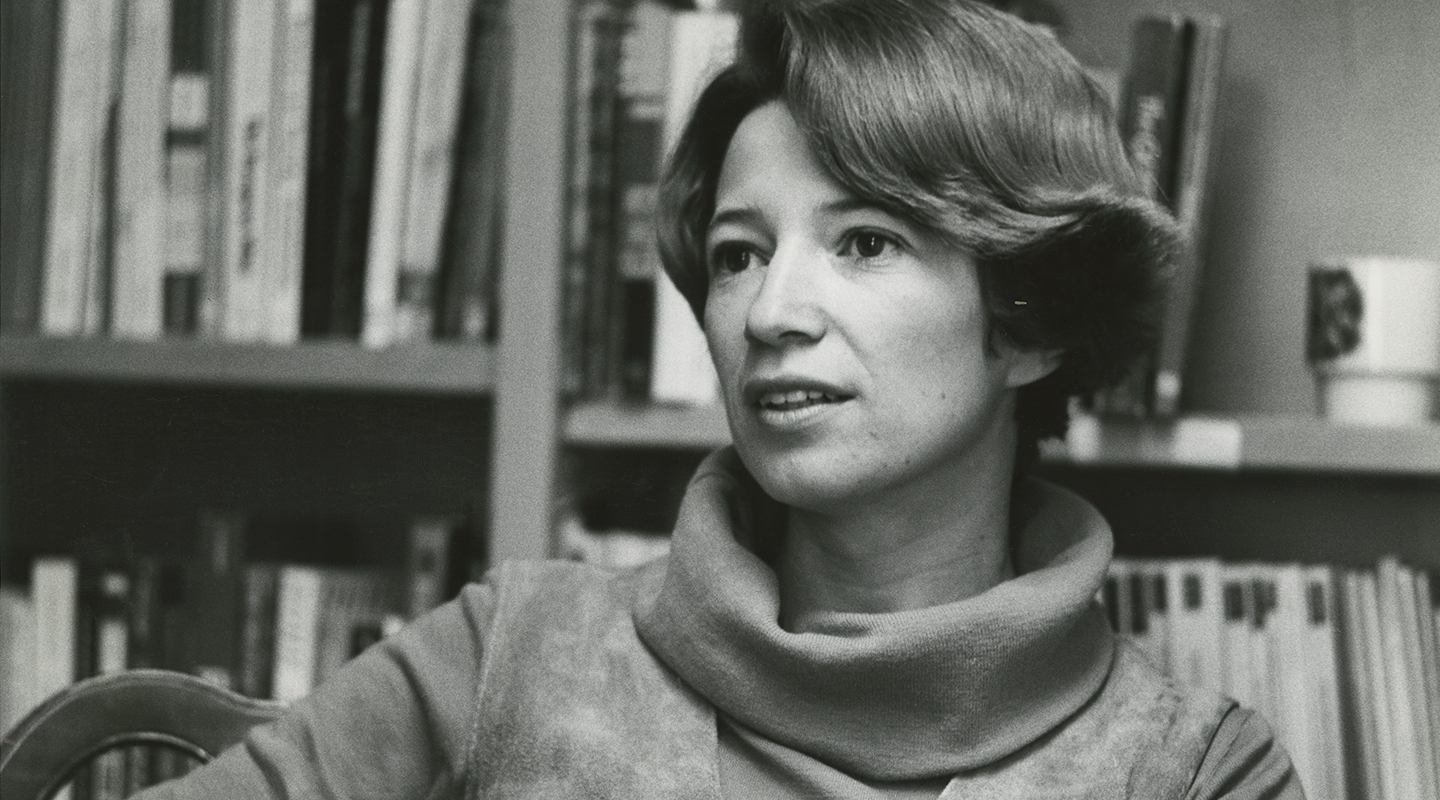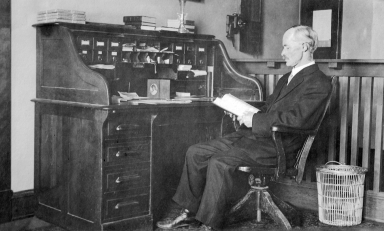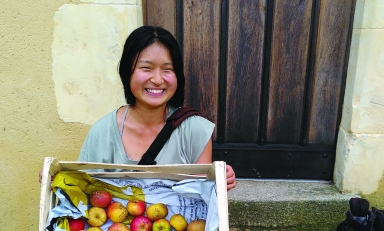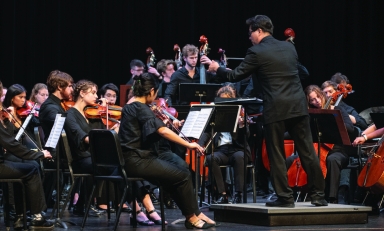A professor of the history of ideas, Horowitz has encouraged generations of students to pursue fulfilling careers. She may be saying goodbye to Oxy, but she’s not the retiring type
Maryanne Horowitz
Professor of History
Years at Oxy: 51
What was your first job after graduate school? After I completed a Ph.D. in history with a minor in political philosophy at the University of Wisconsin in June 1970, I accompanied my husband, Ellis to Cornell University, where I was hired by the Government Department for the 1970-71 academic year. I taught political theory sections, comparative government first-year seminars, and created a course titled “Quest for Utopia,” starting with Plato’s Republic and including visits to local Ithaca communes.
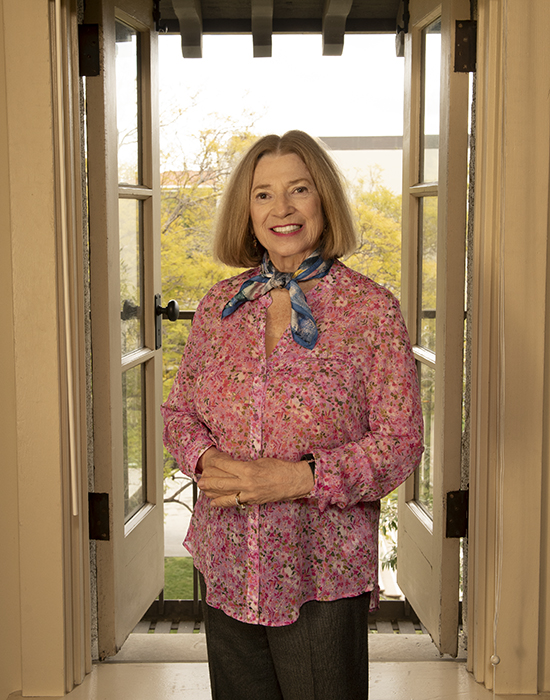
Cornell was one of the first colleges in the country where women’s studies was emerging. I designed a syllabus on “Woman and Man in Western Thought” and started writing a feminist critique of “Aristotle and Woman” [published in Journal of the History of Biology in 1976] and a feminist reinterpretation of Biblical text [published as “The Image of God in Man—Is Woman Included?” in Harvard Theological Review in 1979].
In the fall of 1972, I had a full-time visiting assistant professorship at Ithaca College, teaching “Woman and Man in Western Thought,” “Quest for Utopia,” and “Contemporary Political Issues.” In addition, I was team-teaching with my husband one of the first courses in the nation on “Computers and Society” for a second year at Cornell.
What brought you to Occidental? Under the “old boy” system, history department chairs would typically call up a professor to recommend a man when there was a job opening. But in 1972, the American Historical Association published a guide to jobs, and I had 12 interviews at a conference in New Orleans that December.
In preparing for these interviews, I created three courses—titled “Ancient Athens,” “Renaissance Florence,” and “Renaissance Intellectual history”—and a seminar titled “Methodology in the History of Ideas.” When interviewers asked me what I’d like to teach, I had written these up as college catalog listings, with only two or three sentences each.
Occidental College advertised an opening in European intellectual history to 1700, and I interviewed with three Oxy faculty in New Orleans: Cliff Kroeber, John Rodes, and Norm Cohen. When Professor Rodes called my hotel room after the interview to tell me that the History Department was asking me to come out to Los Angeles the following week, he could hear my baby daughter crying in the background.
When I was asked to interview at Occidental on such short notice, my husband, who was an assistant professor at Cornell, called up some universities in Los Angeles, looking to see if they might need his skills. I was offered the Oxy job in January 1973, and he accepted his post at USC that May. [Ellis continues to teach as professor of computer science and electrical engineering at USC.]
How many women were on the faculty in 1973? Not many, but I sought them out to create together a women’s studies program. I talked to Anne Howells, Annabelle Rea, and Jane Jaquette, and together we asked Marsha Kinder, who was tenured and the senior one, to be the chair. In my second year at Oxy, the catalog listed women’s studies courses. From 1977 to 1979 and 1982 to 1984, I chaired the Women’s Studies advisory committee.
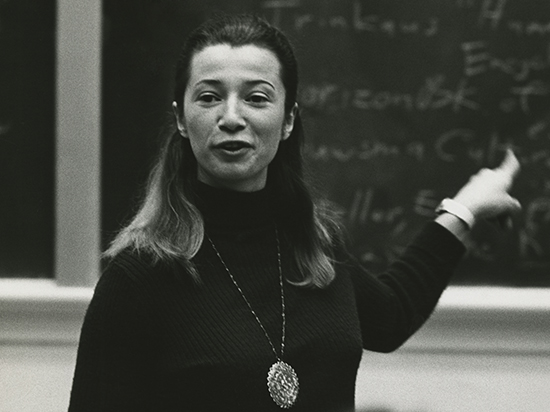
The program was canceled by the administration in 2008, but with the help of faculty (especially Laura Hebert in diplomacy and world affairs) and students (especially Alanna Quan ’16, who is now an archivist at Oxy), we reestablished the minor as Women’s, Gender, and Sexuality Studies in 2016, which continues to this day.
The best years for women’s studies at Oxy were when a faculty search specified the additional role of chairing the minor. The field expands research opportunities: While on a sabbatical in 1979-80, I taught a graduate-level course on “Women of the Reformation” at Harvard Divinity School, and on a sabbatical in 2003-04, I was a visiting scholar at UCLA’s Center for the Study of Women.
Your best-known work is Seeds of Virtue and Knowledge [1999 winner of the Jacques Barzun Prize in Cultural History from the American Philosophical Society]. When did the idea that the mind is a garden come to you? My doctoral thesis and articles in Journal of the History of Philosophy (1971) and Studies in the Renaissance (1974) analyzed De la Sagesse (1601) by Pierre Charron, a priest during the French religious wars. Supporting the religious toleration document of the Edict of Nantes (1598), Charron argued that the seeds of virtue are scattered in all humanity, and consequently Calvinists and Catholics could live peacefully together in France.
Working on my dissertation in the middle of the Vietnam War, I found appealing this uplifting notion about human nature and sought its origin. I went to a philosophy professor at the University of Wisconsin, Julius Weinberg, and he led me over to the Loeb Classical Library edition of Seneca. That was the beginning of my quest for documenting in visuals as well as in texts medieval and renaissance vegetative images, Hebraic and neo-Platonic notions of internal trees rising to the Godhead, and the neo-Stoicism in 16th-century philosophers including Du Vair, Lipsius, Bodin, and Montaigne.
The epilogue to the book sums it up best. The introduction raises the question as to whether “seeds of virtue and knowledge” is an epistemology, a strategy, a paradigm, or a metaphor. It concludes with goal to cultivate in the human community a garden of beauty, truth, and goodness.
What are you working on right now? Years ago, Occidental’s commitment to a diverse student body inspired me to go look for a topic featuring human diversity. And outside the Musée d’Orsay in Paris are six cast iron statues [commissioned for the World Expo in Paris in 1878] representing six continents—the female personifications of Europe, Africa, Asia, North America, South America, and Oceania.
One day in Special Collections, when I was showing my students the College’s rare book containing these hand-colored Ortelius maps [Theatrum Orbis Terrarum], I realized the title page must have inspired those 19th-century sculptures in Paris. That inspired me to gather a group of scholars to write a book on the personifications of the continents.
For the book Bodies and Maps: Early Modern Personifications of the Continents [published in 2021 by Brill Press], I introduced rival interpretations of the continent personifications—hierarchy, Christianity, ethnography, human dignity, and racism—as well analyzing the rival poems by which Ortelius introduced his Latin, Italian, and French editions. I also traced the Renaissance costume book influences on four large tapestries of personifications of Africa, America, Asia, and Europe that are still decorating the New York Public Library Trustees Room, as far as I know.
Now we’re working on a second book, tentatively titled Controversial Monuments: Personifications of the Continents From the 18th Century to the Present, with my co-editor on Bodies and Maps, Louise Arizzoli, taking her turn as lead editor. My chapter focuses on some rare Jesuit pulpits located in churches in Belgium, portraying wood figures of Africa, Asia, America, and Europe. As an extended reader at the Getty Research Institute, I related the wood figures to the artwork of Rembrandt and Rubens and to images of. Jesuit missions abroad, and analyzed these three-dimensional figures which forecast the ones now outside the Musée d’Orsay.
Here in Los Angeles, we are blessed with the libraries and resources of the neighboring institutions, including the Huntington, and the Getty Center, and the Clark Library of UCLA. At the UCLA CMRS Center for Early Global Studies, where I am an associate faculty member, this academic year I focused on Japan in early modern times, a topic of a yearlong series of conferences at the Clark Library; and I recently participated in a two-week tour of Japan.
What’s the most surprising thing about your own career? Some people think that retirement implies that one’s career is coming to a close, but I don’t see it that way. I will continue to serve on the board of editors and board of directors of the Journal of the History of Ideas, the journal which helped me define my interests as an undergraduate at Pembroke College in Brown University.
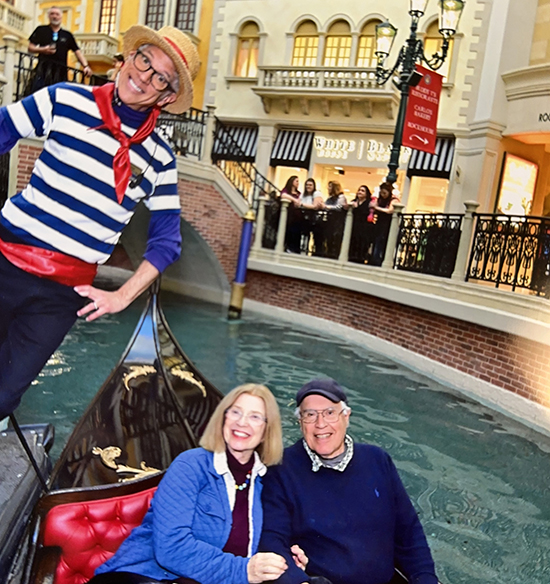
I became a historian of ideas with the notion that nothing human is foreign to me. European intellectual history would be my base, but my curiosity went beyond that, particularly into visual representation. My boldest innovation as editor-in-chief of the New Dictionary of the History of Ideas in 2005 was that the six volumes are both global and visual in presentation.
How did you and your husband manage to balance two careers with raising a family? Ellis and I raised three kids together, all of whom independently developed managerial and creative skills. Daughter Pipi Diamond is a pet and family photographer in the San Francisco Bay Area. Sons Edward and Ira Horowitz operate their own businesses in Calabasas and Beverly Hills, respectively. Ellis and I enjoy our five grandchildren, ages 13 to 5, and in April our family celebrated the bar mitzvah of the eldest grandchild. I would say we’ve compatibly made a life for ourselves in this city. A scientist might say we solved the “two-body problem.”
Anything else you’d like to touch on? I’m happy to correspond with former students in the future. I have a little bit more time now.
“Dr. Horowitz saw something in me that no one else did.”
Diana Culp Bork ’79: I was among Maryanne Cline Horowitz’s earliest students at Oxy. She arrived in the fall of 1973. I arrived two years later, an unformed product of the Southern California public schools. Being a first-generation college student, I had little idea what I wanted out of my years at Occidental, what I wanted to study or what I wanted to do or be. Dr. Horowitz saw something in me that no one else did.
I gravitated to the humanities and over time wound up double majoring in psychology and history. I took Dr. Horowitz’s packed seminar in History of Ideas. I didn’t have a clue how to properly research or write a paper; Dr. Horowitz sent me off to Clark Memorial Library at UCLA to work with original manuscripts and 17th-century texts. And I started writing. And writing. And writing.
When Dr. Horowitz chaired the College Scholar Program, she asked me to present a thesis on the impact of natural law thought on slavery in Greco-Roman culture. Then came a paper on women’s rights in Greco-Roman law as developed from Draco’s Code, through the Codex Theodosianus and then the Corpus Juris Civilis. (Don’t ask!)
In my senior year, Dr. Horowitz suggested I apply for the Rhodes and Marshall scholarships. I did surprisingly well in both competitions, making regionals for both, but was not selected. Nevertheless, over lunch in the Cooler, she urged me on, and I was accepted at five top law schools, including Harvard Law, from which I graduated. Dr. Horowitz envisioned me there since she had eaten lunch there daily while working on her Harvard master of arts in teaching in social sciences.
After I graduated from Occidental, Dr. Horowitz became “Maryanne,” at her insistence. Our friendship has endured ever since.
Maryanne visited me at Harvard when she had a sabbatical teaching assignment at Harvard Divinity School. I will never forget attending chapel together at Harvard Memorial Church, sitting in the choir stalls, while she gave the sermon on Ecclesiastes 3:1-8: “For everything there is a season.” Years later, Maryanne visited me in Washington, D.C., when I was practicing law. We shared lunches and dinners and wandered through Harvard University’s Dumbarton Oaks.
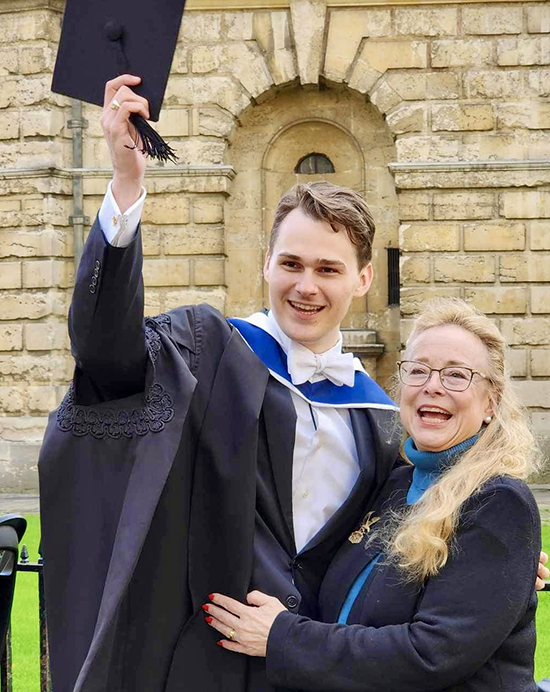
The love of learning, which Maryanne instilled in me, continued on in my life as a lawyer at the Department of Justice and then as deputy general counsel at the U.S. Department of Education. To this day I study education issues in America (for fun!) but have many historical readings lying around the house in various stages of completion.
My daughter, Claire, met Maryanne in our home in McLean, Va. Maryanne mentored her in her desire to work in game design. Today, she’s a successful game analyst at ZeniMax, a division of Microsoft.
My son, Robert, followed in my footsteps, the ones that Maryanne had set in motion decades before. While at the University of Virginia, he spent a summer at Oxford, vowing to return there for graduate work. He did precisely that—and in Maryanne’s field: history of ideas and intellectual history. Robert’s scholarly work focuses on legal history with a research concentration on the impact of Adam Smith on American law and jurisprudence. Upon completion of his M.Phil last year, he received the Fortescue Scholarship from the Canterbury Institute and is now working toward a doctor of philosophy at Oxford. He applies to law school this fall.
None of this would have happened had not Maryanne noticed that quiet girl in the back row in 1975. Thank you, Dr. Horowitz.
A summa cum laude graduate of Occidental and cum laude graduate of Harvard Law, Bork is senior vice president and general counsel of Bork Communication Group.
“Her dedication and passion for teaching have left an indelible mark on me.”
David Kimball ’17: I met Professor Horowitz during my first year at Occidental, when I enrolled in her Cultural Studies Program class on Renaissance Individuals. At that time, my interests were divided between history and biology, and I dreamed of attending medical school. Professor Horowitz not only recognized my enthusiasm for these subjects but encouraged me to pursue them. As my adviser, she helped me develop a schedule that accommodated my premed requirements and my history major.
Professor Horowitz was not just a mentor but a source of inspiration who encouraged me to explore my love for teaching and tutoring. During my senior year, we devised an independent study class that gave me a unique opportunity to learn more about teaching. Previously, I had taken her Antiquity to 1700: Europe and the Middle East course, which I found very interesting. Professor Horowitz had always wanted to encourage greater participation in her class discussions, and she believed that my input would help achieve this goal. For my independent study, I was her teaching assistant for that class. My duties included participating in class discussions, coaching the group debate practices, researching and compiling a resource guide on the Crusades, and delivering a lecture on primary sources and the importance of critical reading.
In medical school, I used the teaching skills I had gained under Professor Horowitz’s guidance as a peer tutor and when I gave guest lectures for second-year pharmacology classes, where I discussed my clinical experiences with various drugs. I enjoyed sharing my insights while helping other medical students.
Professor Horowitz’s unwavering support and guidance were instrumental to my success at Occidental and beyond. Although medicine is now my career, I will always be a historian at heart. Her dedication and passion for teaching have left an indelible mark on me. I am forever grateful for the opportunities she has provided. I want to express my gratitude to Maryanne for everything she did for me.
Kimball is an internal medicine resident at Touro University Nevada.
“Thank you for your dedication to me and to all the students who learned from you.”
Angélica Salas ’93: Maryanne Horowitz made me love history and taught me about the power we gain when we learn about our past. While I was a student at Occidental, I interned with her as she conducted research for her manuscript and observed how much attention to detail it takes to tell a historical story. I will always be grateful for her support of my successful application to the Ford Summer Internship Program.
As my mentor for this fellowship, Professor Horowitz gave me the opportunity to travel to Mexico and learn about Fray Bartolomé de las Casas and his defining role in the development of the ideas of human rights for indigenous peoples of the Americas. This work remains so relevant for me as I fight for human rights in the work I do as executive director of CHIRLA, the Coalition for Humane Immigrant Rights. Thank you, Professor Horowitz, for your dedication to me and to all the students who learned from you over your many years at Occidental.
Salas joined CHIRLA in 1995 and has been its executive director since 1999.

